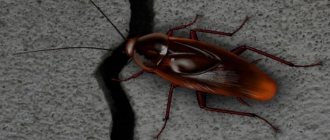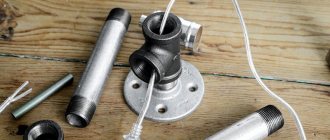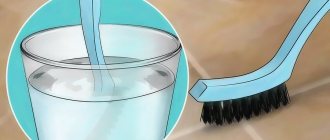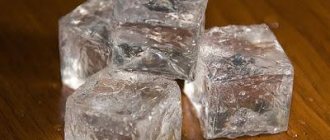Varieties of dracaena: names and photos
According to different classifications, there are from 50 to 150 varieties. Marginata, whose homeland is Africa, is popular . Her hybrids for home cultivation: Magenta, Bicolor, Tricolor. An adult dracaena can reach a height of 3 meters. The plant is evergreen, non-poisonous. At the top of the main trunk, long narrow leaves are collected in a bunch. Depending on the variety, the stripes on them can be of different widths and colors (red, yellow, cream).
The Reflex variety is also common among flower growers . Its trunk is more branched (often from the very root) and less durable. The leaves are a less saturated green color with a yellow border at the ends and are directed downwards.
Dracaena Fragrant , which can reach 6 meters in height, is also popular It rarely blooms in the house, but sometimes this can be achieved if you care for it properly. The aroma is pleasant. Flowers are white or yellow. Leaves can grow up to 60-70 cm in length and 2-3 cm in width.
Dracaena Derema can reach a height of 3 meters. Occasionally at home you can see red flowers with an unpleasant odor. The leaves are up to 50 cm long and up to 5 cm wide. Their color is dark green with yellow and white stripes.
that stands out the most is Godsefa . It is notable for its oval leaves with pointed ends. They are arranged in whorls of 3-5 pieces. The leaves are 7-10 cm long, 3-5 cm wide. Their color is green with light spots.
The Sanderskaya variety of dracaena is low-growing (up to 1.5 m). Its leaves are green with wide gray and white stripes, thin and slightly curved.
Dracaena Goldie is notable for its thin trunk and the color of its leaves, pointed at the apex (white with transverse green stripes), 20 cm long and 12 cm wide.
Dracaena Surculosa grows up to 1-1.5 m. The leaves are short green with yellow dots. This variety is shade-loving. When taken out into the open air in summer, it can bloom.
Replanting and pruning at home
If a palm tree is never pruned, its crown will acquire an elongated, ugly configuration and lose its splendor. In addition, pruning is necessary for reproduction.
Use one of two cutting methods:
- The trunk is completely cut off at a certain height. The cut is covered with crushed coal or filled with liquid paraffin. After about a month, side shoots will begin to grow in this place, forming a new crown. The cut part of the stem is rooted in a separate pot.
- Below the top on the stem part, a shallow transverse incision is made, which is wrapped with damp moss and polyethylene. When aerial roots appear, the stem is completely cut off and transplanted into a pot.
Now let's figure out how to transplant dracaena at home. The procedure is carried out in case of strong growth of the root system, in order to replace the soil, in case of damage to the roots by pests, as a planned annual event, two weeks after purchase.
The best time to transplant is early spring. The diameter of the new pot should be 2.5-3 cm larger than the previous container. First, a drainage layer of broken brick, expanded clay or pieces of foam is laid at the bottom. Since transplantation is carried out using the transshipment method, the palm tree is not watered for 3-4 days the day before. The flower, together with a lump of earth, is placed in a new pot, and the voids around are covered with earth. For two weeks after transplantation, provide abundant watering and fertilizing to stimulate root formation.
How to replant dracaena after purchase
Regarding transplantation of dracaena after purchase, the opinions of gardeners differ. Some of them suggest postponing this process for 2-3 weeks to acclimatize the plant to new conditions. Others consider it correct to transplant immediately after purchase. Still others do not see the need for this procedure at all.
You can do without replanting if the plant looks healthy, its dimensions correspond to the width of the pot, and the soil is not a transport substrate and is not depleted. In this case, it is enough to transfer it to a new container and wait until spring.
You cannot do without replanting when, with a plant height of 40 cm, the width of the pot is less than 15 cm. If the dracaena was sold in soil based on peat, this manipulation should not be postponed. Otherwise, the roots may rot. It is necessary to free them completely from the existing substrate and plant them in new soil. You cannot take soil from your personal plot, as it may be infested with pests.
How to care for a plant at home
The big advantage of Dracaena is that it is completely unpretentious and caring for it does not require much effort. The flower loves warmth, but in extreme heat it is better to place it in a room with less light. You will learn more about all the nuances of growing a flower at home below.
This is interesting: Competent technique for performing a barbell press from behind the head
Temperature of keeping a houseplant
It is worth noting that the plant is heat-loving, therefore it reacts negatively to changes in room temperature, especially if we are talking about a strong decrease in temperature. Dracaena prefers temperatures in the range of 15 to 25 degrees. If the temperature changes sharply by + or - 10 degrees, this can cause the death of the plant. It is also important to remember that the frequency of watering depends on the heat level.
How to water dracaena
At lower temperatures in winter, the plant needs moisture less often. In summer, waterlogging should not be allowed. Dracaena requires daily spraying, with the exception of species that prefer dry air.
Where to put a flower in an apartment
To choose the right location for the plant, you should take into account that the flower does not like drafts. To prevent direct sunlight, but still provide a sufficient level of illumination, it is better to place the dracaena on the wall opposite the window. A curtain can also be used to diffuse light. In some cases, you can use artificial lighting. The most favorable rooms are those with windows facing east or west.
How to prune for branching
In order to provoke branching of dracaena, it is necessary to perform pruning. It is better to do this in spring or summer. By the time of the first procedure, the plant should already reach a height of 30 cm and be healthy. For manipulation you will need a sharp object.
The cut should be made in the place where you want to see the branching of the dracaena. A damaged plant trunk must be disinfected with charcoal powder or filled with melted paraffin. At a distance of 10 cm from the cut, you need to remove all existing leaves. After the procedure, it is advisable to spray the trunk to prevent excessive moisture loss. You can attach wet sphagnum moss to the cut site and a plastic bag on top. The plant should be placed in a warm, dark place. Every 5-7 days it is necessary to check the condition of the trunk under the moss.
New buds will appear in about a month. After this, the plant can be returned to its place, and the moss with the bag can be removed.
Feeding and fertilizers
Plant feeding is carried out in the spring and summer. The packaging of the complex fertilizer should indicate that it is also suitable for dracaena. The frequency of the procedure is once every 10-14 days. Dosage and instructions are indicated on the packaging. There are some types of dracaena that do not have a dormant period in winter. In this case, the fertilizer is applied once a month.
Caring for dracaena at home
Growing dracaena at home is quite easy because it is an unpretentious plant.
Lighting
For this plant, you should choose a well-lit place next to a window with a western or southern orientation. However, remember that the foliage must be protected from direct rays of the sun, but the dracaena cannot be placed in strong shade. Variegated forms are more photophilous and thermophilic compared to green-leaved varieties and species.
Feeding
During the growing season, which begins in April and ends in September, fertilizing is carried out once every 15 days. To do this, use granular or liquid complex fertilizer for decorative foliage plants. In autumn, after the start of the dormant period, the plant cannot be fed.
Temperature
In summer, the optimal air temperature is from 18 to 25 degrees. And in winter it should not fall below 12 degrees.
Watering dracaena
This plant should be watered systematically and abundantly, and this should be done only after the top layer of the substrate has dried to a depth of 20–30 mm. When watering, do not allow moisture to stagnate in the soil mixture, as dracaena reacts extremely negatively to this. Before watering the plant, it is necessary to carefully loosen the top layer of the substrate. Water the bush with well-settled water or water passed through a filter.
In summer, watering is carried out on average once every two days. If the surface of the substrate manages to dry to a depth of 20–30 mm faster, then watering should be carried out more often. Remember that dracaena needs high air humidity; for this, in the summer it should be moistened with a spray bottle, and water should be used whose temperature is close to room temperature.
If in winter the plant is in a cool place, then the number and frequency of watering should be reduced. However, if it is located next to a working heating device, then watering and moistening will need to be carried out even more often than in summer. Otherwise, the bush may dry out.
Watering dracaena











